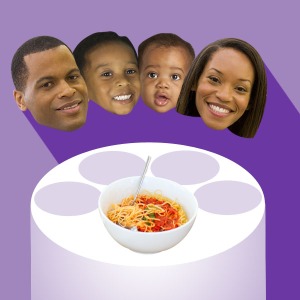
This Week’s Recipe
What if I told you that something as simple as a family dinner has the potential to save a life? It sounds incredible, doesn’t it? Or perhaps it sounds like an exaggeration. However, I’m not so much talking about what’s on the table as I am referring to who’s at the table.
According to a September 2012 report by The National Center on Addiction and Substance Abuse at Columbia University (CASAColumbia), teens who took part in regular family dinners were significantly less likely to take part in destructive behaviors such as drug and alcohol use. Additionally, the report revealed that teens who have frequent family dinners (five to seven a week) are more likely to say they have an excellent relationship with their parents when compared to teens who ate dinner with their parents fewer than three times a week.
This wasn’t the first time that CASAColumbia found such results. In fact, the 2012 report was the eighth in a series of annual “Importance of Family Dinners” studies that all came to very similar conclusions. Year after year, the results have shown that regular family dinners can reduce everything from teen substance abuse to teen stress levels.
So it’s true: something as basic as eating a meal together five to seven days a week can have a very powerful effect. However, in this digital era, family meals are becoming increasingly uncommon. How many of us eat dinner as families anymore? And if we do, are we truly eating together, conversing, and interacting with each other? Are we genuinely listening to one another? Or is the TV on? Are we on our phones, checking social media, email, or even work-related updates?
It’s often been said that “An ounce of prevention is worth a pound of cure,” and nowhere is that proverb more applicable than in this situation. In this instance, the ounce of prevention is taking the time to get together to eat, putting down the phone, turning off the TV, openly speaking, and actively listening. In the short term, the ounce of prevention may seem inconvenient or even mildly uncomfortable for some people. However, the proverbial “pound of cure” that can be required when a teen gets caught up in the world of substance abuse can be far worse than a mere inconvenience or mild discomfort. Yet too many families wait for a crisis to arise to change their family dynamic, communication, and habits.
However, for some families, a family dinner is impossible. Sometimes schedules don’t permit everyone getting together around dinner time. That’s when it becomes necessary to set aside a different time to get together, whether it’s for a meal or other activity that allows for good communication. What’s most important is that the setting allows everyone involved to focus on one another in a distraction-free environment.
At most, regular family dinners have been shown to have the ability to help prevent very destructive youth behaviors. At the very least, they provide families with the time and setting to communicate and get to know one another better. Considering how much hangs in the balance, why not set aside some time today to get together as a family?
For more tips on healthy communication, read our “Talking to Kids” electronic pamphlet:
http://50.62.253.121/wp-content/uploads/2013/05/Talking-to-Kids-ver3.pdf
CASA Columbia 2012 press release (“The Importance of Family Dinners VIII”):http://www.casacolumbia.org/templates/PressReleases.aspx?articleid=697&zoneid=95

Shane Watson
Communications Coordinator
notMYkid.org
“notMYkid is an Arizona-based nonprofit that seeks to inspire positive life choices by educating students, parents, and school faculty on six topics: substance abuse, bullying, Internet safety, depression, unhealthy relationships, and body image.”
Posted in
Tip of the Week and tagged
culture,
dinner,
education,
Events,
family,
food,
health,
holidays,
home,
Life,
lifestyle,
local,
photos,
recipes,
relationships,
social media |
















